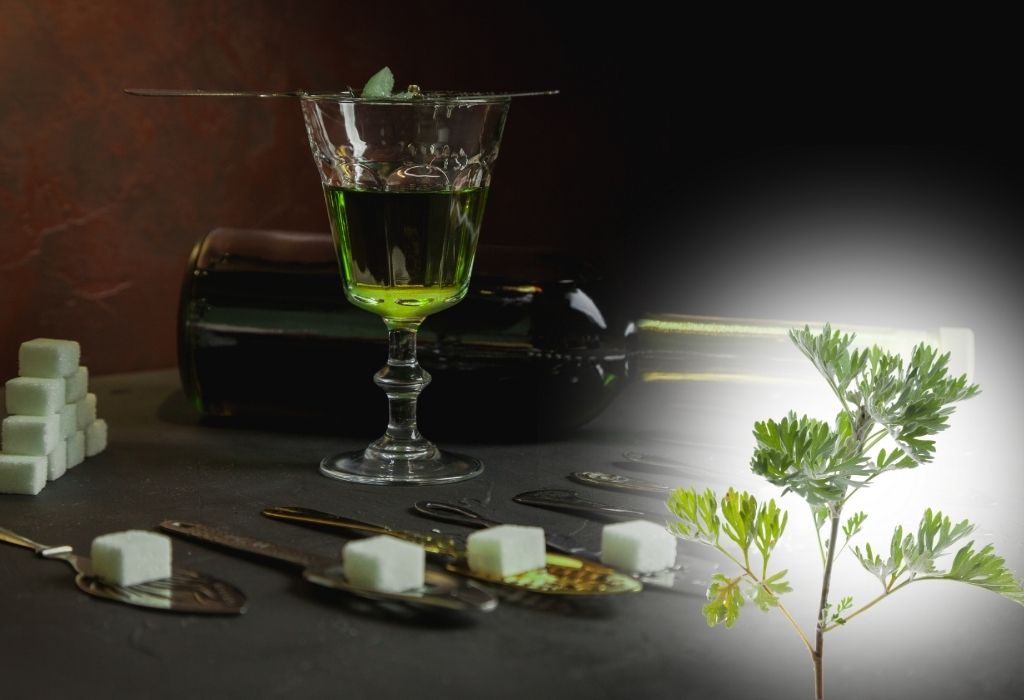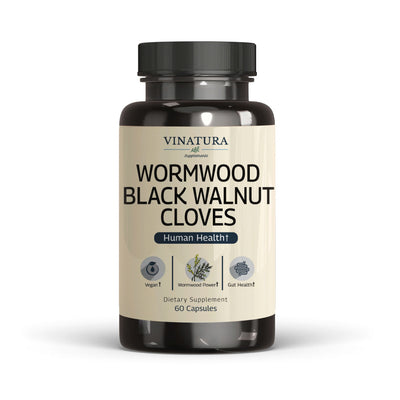
How To Make Absinthe With Wormwood At Home?
Wormwood is considered a "miracle herb" that aids digestion, reduces inflammation, alleviates pain, and boosts immunity. Besides its conventional uses, many consumers seek ways to turn it into a recreational drink that also promotes health: absinthe. In this article, we will guide you on how to make absinthe with wormwood at home using simple ingredients.
Before exploring further, please read the disclaimer located at the end of this webpage.
Key Takeaways
- Absinthe is one of the high-proof spirits made from herbs such as anise, fennel, and wormwood.
- It features a strong, complex flavor with hints of licorice and fennel, leaving a robust aftertaste.
- There are three simple methods to make absinthe from wormwood at home: Infusion, Oil Mixing, and the 1855 Recipe.
What Is Absinthe?
Absinthe, often referred to as "the Green Fairy," is a high-proof herbal spirit distilled from various herbs, primarily wormwood (Artemisia absinthium). This drink is noted for its distinctive green color and unique flavor, with an alcohol content ranging from 90 to 148 proof, with some varieties reaching up to 179 proof.
Due to its high alcohol content, absinthe is typically diluted with ice water and accompanied by a bit of sugar to soften the taste and enhance the complex aroma.
What Does Absinthe Taste Like?

Absinthe is renowned for its strong and complex flavor, providing a unique experience for drinkers. Upon tasting, you will notice distinctive notes of fennel and anise, akin to the flavor of licorice. This may appeal to many, but the intense aftertaste can be off-putting for some.
The Origin of Absinthe
It's difficult to pinpoint the exact origins of absinthe. However, the most famous origin traces back to the medicinal use of wormwood in ancient Egypt. Wormwood was recorded in the Ebers Papyrus around 1550 BC and was used by ancient Greeks for medicinal purposes. Evidence suggests that wormwood-flavored wine, known as absinthites oinos, existed in Greek culture. Another origin story claims that wormwood was first used in 1792 when a French doctor, Pierre Ordinaire, developed a formula and passed it on to the Henriod sisters in Couvet, Switzerland.
Absinthe gained popularity in the mid-19th century, particularly among European artists and intellectuals, but was criticized for its negative health impacts. The anti-absinthe movement culminated in the early 20th century, leading to its prohibition in many countries. After decades, countries began re-evaluating the ban, with Switzerland lifting it in 2003 and France in 2011. Today, absinthe has made a comeback in bars worldwide, albeit with lingering caution due to its controversial history.
How To Make Absinthe From Wormwood At Home?
Here’s a guide to making absinthe at home with a proof of 95:
Ingredients to Prepare

- Wormwood: 35 grams
- Anise seeds: 35 grams
- Star anise: 8 grams
- Fennel seeds: 4 grams
- Angelica root: 8 grams
- Hyssop: 4 grams
- Coriander: 4 grams
- Cardamom pods: 4 pods
- Nutmeg: ½ nut
- Alcohol (Strong spirits like Vodka or according to taste)
- Equipment: 1 glass bottle, 1 strainer or cloth bag, 1 dark storage container
Note: Wormwood, anise, and fennel are essential for creating the distinctive flavor of absinthe. It’s advisable to buy all the ingredients separately and mix them at home for the best results. This will also help you control the quality and desired alcohol concentration.
Top 3 Wormwood Absinthe Recipes
Recipe 1: Infusion
- Add ⅓ cup of the herbal mixture to 750ml of your chosen alcohol.
- Place the mixture in a bottle and store for 2 weeks to 2 months to achieve the desired alcohol concentration.
- Infuse the wormwood in vodka for a few days to create the infusion.
- After the storage time, strain out the herbs and retain the liquid.
- Pour the brown liquid into a pot and distill it. This step will help eliminate bitterness and reduce alcohol concentration.
- Add the infusion from step 3 to the distilled alcohol. You can also add water to dilute the distilled alcohol.
Recipe 2: Oil Mixing
- Place alcohol in a glass bottle, add wormwood, and seal it with a cork. Keep the mixture for 1 month.
- Note: Shake the bottle a few times every few days.
- Grind the herbal mixture using a mortar and pestle. You can use a dedicated grinder if you want to produce a larger quantity.
- After 1 month, strain the liquid to remove the herbs.
- Add the ground herbal mixture to the liquid. This will enhance the color and aroma of the absinthe.
- Place the liquid and herbs in a bottle to steep for another month, ensuring to shake it a few times.
- After 1 month, you can enjoy the absinthe, diluted with water or ice as desired.
Recipe 3: The 1855 Absinthe Recipe [1]

- Infuse a mixture of 2.5 kg of dried wormwood, 5 kg of anise, and 5 kg of fennel in 95 liters of 85% ethanol for at least 12 hours.
- Add 45 liters of water to the mixture and heat it. Here, you will obtain 95 liters of distillate.
- Add 1 kg of Roman wormwood, 1 kg of hyssop, and 500 grams of mint to 40 liters of the distillate. Extract at a moderate temperature, then distill and combine it with the remaining 55 liters of distillate.
- Dilute with water to create about 100 liters of absinthe with a final concentration of 74%.
Frequently Asked Questions
Is Absinthe Legal?
Yes, absinthe is legal in most countries worldwide as the ban was lifted in the 2000s. However, in the United States, absinthe is only legal if it does not contain thujone.
Is Absinthe Safe?
Yes, absinthe is safe when consumed in moderation. If you find high concentrations too strong, dilute it with water or add a small sugar cube for a milder flavor.
Is Absinthe a Hallucinogenic Alcohol?
No, absinthe does not cause hallucinations. While historical absinthe contained the psychoactive compound thujone, it is not believed to cause hallucinations. Instances of absinthe causing hallucinations may be due to the effects of chronic alcoholism or alcohol poisoning.
How do you activate wormwood in absinthe?
Pour about 1 ounce of absinthe into a glass, then place an absinthe spoon with a sugar cube on the rim of the glass. Slowly pour chilled distilled water over the sugar cube until saturated. Allow the sugar cube to dissolve and enjoy.
How is wormwood used in absinthe?
Wormwood is ground with herbs and then distilled in a water or steam bath until the distillate reaches a concentration of 60-80%.
How do you harvest wormwood for absinthe?
The part of the wormwood used for the spirit is the upper portion of the stem, which is usually lighter green than the rest of the plant. It should be hung in a dark place to dry.
Why was wormwood absinthe banned?
Absinthe was banned due to concerns that its wormwood content could be used to produce hallucinogenic and psychotropic substances.
What ingredients are needed to make Absinthe at home?
The main ingredients in a bottle of absinthe are wormwood oil, fennel, hyssop, and anise. Among these, wormwood, anise, and fennel are the most crucial.
Conclusion
In summary, when consumed responsibly, absinthe can be a natural remedy to enhance health. We hope you now know how to make absinthe with wormwood easily and simply using just basic ingredients and a bit of patience. Experiment and adjust the recipe to find the flavor that suits your preferences best. Enjoy the exciting experience and savor the product you’ve created yourself!
References
- [1] 1855 Absinthe Recipe - Home Distiller. (2013, February 15). Homedistiller.org. https://homedistiller.org/forum/viewtopic.php?t=36745
Author

Product Disclaimer
The dietary supplement products mentioned on this website are formulated based on scientific research and adhere to FDA guidelines for dietary supplements. However, the content of the articles has not been evaluated by the Food and Drug Administration (FDA) and is not intended to promote or endorse any specific product. Any products sold on this website are not intended to diagnose, treat, cure, or prevent any disease.
Opinions and Endorsements
Any claims, statements, or opinions expressed in the articles are those of the author(s) and do not necessarily reflect the views or opinions of the manufacturers of the dietary supplement products. The products sold on this website are separate from the content of the articles and are not directly endorsed or associated with the information presented here.
Liability Disclaimer
The author(s) of the articles, website, and manufacturers of the dietary supplement products do not assume any liability for any potential consequences arising from the use of the information provided in the articles. It is recommended that individuals consult with a qualified healthcare professional before making any dietary or lifestyle changes, including the use of dietary supplements.
Product Usage
Please refer to the product labels and packaging for specific usage instructions and guidelines for the dietary supplement products sold on this website.
Customer Support
For any concerns or questions regarding the dietary supplement products, please contact our customer support team, who will be more than happy to assist you.





Leave a Comment
Be the first to comment.
What do you think?